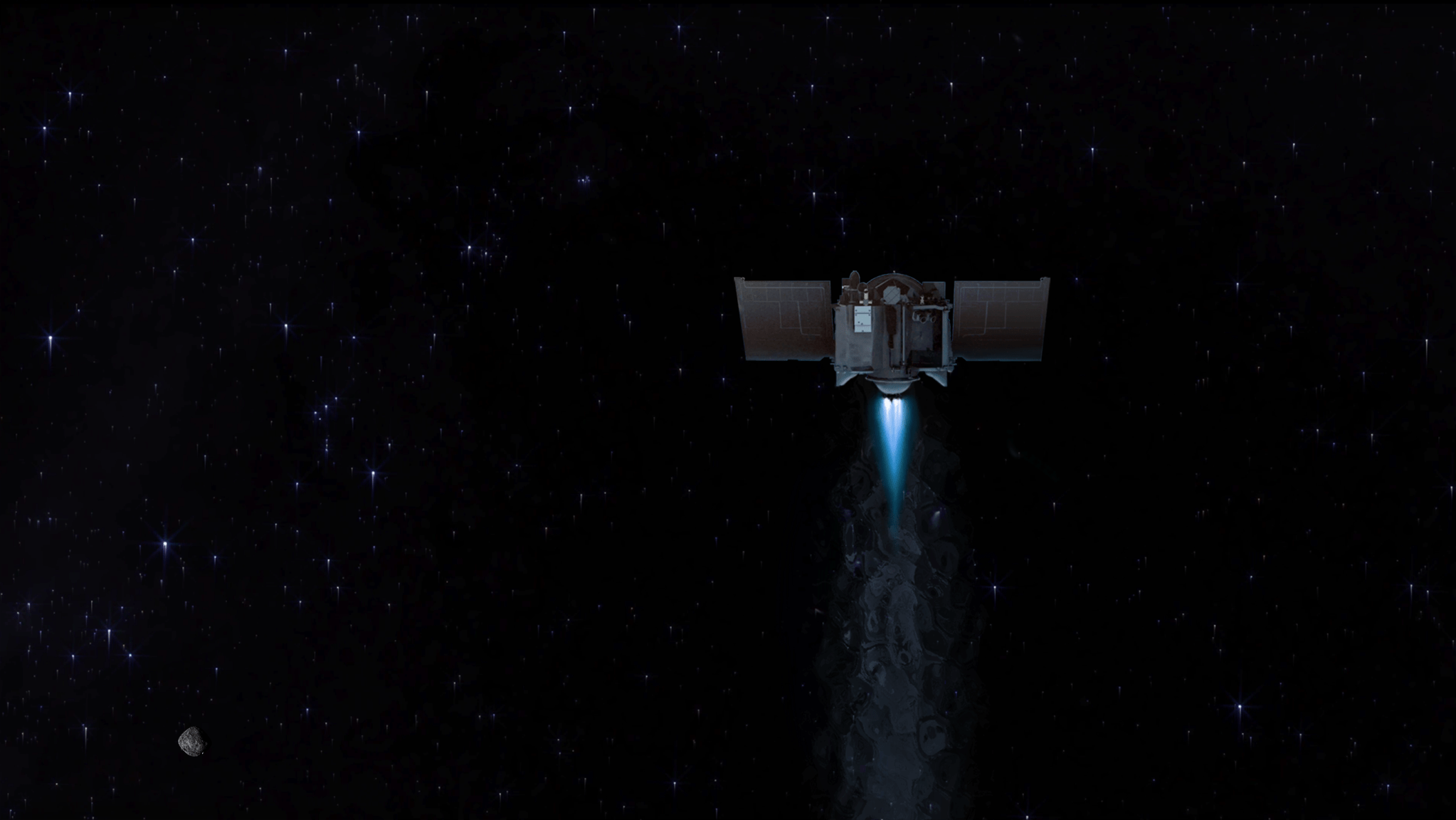NASA invites the public and the media to watch its first asteroid sample return mission begin a two-year cruise home at 4 p.m. EDT Monday, May 10, on NASA Television, the NASA app, and the agency’s website. The public can follow along on the NASA Solar System Instagram, Twitter, and Facebook accounts using #ToBennuAndBack, and ask questions about the mission by commenting on an Instagram story between 12 p.m. EDT, May 10 and 12 p.m. EDT, May 11. Answers will post to NASA Solar System’s Instagram stories on May 11.
Origins, Spectral Interpretation, Resource Identification, Security, Regolith Explorer (OSIRIS-REx) is the first NASA mission to visit a near-Earth asteroid, survey the surface, and collect a sample to deliver to Earth. During the broadcast, scientists will reveal new imagery from the mission’s final flyover of the asteroid Bennu and discuss the tense moments from the sample grab in October 2020. The broadcast also will cover how the team engineered its way out of challenges that threatened its mission.
At approximately 4:16 p.m. EDT, the OSIRIS-REx control room located at Lockheed Martin, in Littleton, Colorado, will receive a confirmation that the spacecraft fired its main thrusters to push away from asteroid Bennu’s orbit, approximately 16 minutes after it happened. After 7 minutes of firing its thrusters, OSIRIS-REx will officially start its long journey home with more than 2.1 ounces (60 grams) of asteroid material.
The OSIRIS-REx departure sequence is the mission’s most significant maneuver since it arrived at Bennu in 2018. The spacecraft’s thrusters must change its velocity by 595 miles per hour (958 kilometers per hour) for OSIRIS-REx’s path to intersect Earth and achieve a successful sample return at the Utah Test and Training Range on Sept. 24, 2023.
There is no straight path back to Earth. Like a quarterback throwing a long pass to where a receiver will be in the future, OSIRIS-REx is traveling to where the Earth will be. The spacecraft will circle the Sun twice, covering 1.4 billion miles (2.3 billion kilometers) over to catch up with Earth.
OSIRIS-REx made history many times during its two and half years of operations on the asteroid, including breaking its own record for the closest orbit of a planetary body by a spacecraft. Bennu is the smallest celestial object ever orbited by a human-built spacecraft.
OSIRIS-REx will bring back the largest sample collected by a NASA mission since the Apollo astronauts returned with Moon rocks. Scientists plan to analyze the sample to learn about the formation of our solar system and the development of Earth as a habitable planet.
Once recovered, the capsule will be transported to the curation facility at NASA’s Johnson Space Center in Houston, where the sample will be removed for distribution to laboratories worldwide. NASA will set aside 75% of the samples for future generations to study with technologies not yet created.
NASA’s Goddard Space Flight Center in Greenbelt, Maryland, provides overall mission management, systems engineering, and the safety and mission assurance for OSIRIS-REx. Dante Lauretta of the University of Arizona, Tucson, is the principal investigator. The University of Arizona leads the science team and the mission’s science observation planning and data processing. Lockheed Martin Space in Littleton, Colorado, built the spacecraft and provides flight operations. Goddard and KinetX Aerospace are responsible for navigating the OSIRIS-REx spacecraft. OSIRIS-REx is the third mission in NASA’s New Frontiers Program, managed by NASA’s Marshall Space Flight Center in Huntsville, Alabama, for the agency’s Science Mission Directorate Washington.
For more information on OSIRIS-REx, visit:
and
-end-
Karen Fox / Alana Johnson
Headquarters, Washington
301-286-6284 / 202-358-1501
karen.c.fox@nasa.gov / alana.r.johnson@nasa.gov
Rani Gran
Goddard Space Flight Center, Greenbelt, Md.
301-286-2483
Rani.C.Gran@nasa.gov



























